As the UK begins its roadmap out of lockdown, many stargazers are eagerly anticipating the day when they can travel to dark skies and are already planning a stargazing trip to Scotland this autumn, when the new astronomy season rolls around.
Away from the cities, the nation is home to huge areas of the UK’s darkest skies, allowing for some stunning views of deep sky objects, while its rugged landscape offers up many dramatic foregrounds for you to set your skyscape astrophoto against.
With low levels of light pollution across Scotland, including multiple Dark Sky Places accredited by the International Dark-Sky Association, there’s no shortage of options.
In mid spring or autumn, the northern latitudes of Scotland make it the place you are most likely to catch the aurora – or Da Mirrie Dancers, as they are called in the Northern Isles – prancing across the skies.
But now more than ever it’s important to plan a stargazing trip to be safe and responsible, so here is our handy guide to how to stargaze in Scotland safely.
Picking a place to visit
Scotland is home to many dark skies.
As well as official IDA Dark Sky sites, there are low levels of light pollution throughout the country, meaning wherever you are, you’ll only be a short drive from some great stargazing.
But if the choice is making your head spin, then start by working out what you want to get out of the trip.
For instance, if stargazing is just one activity during your holiday, look around at what there is to do during the day.
Nature buffs might want to base themselves in the Galloway Forest Park, Dumfries and Galloway. The largest forest in the UK, Galloway was the first UK site to be classed as an IDA Dark Sky Park and is part of the Galloway and Southern Ayrshire UNESCO Biosphere.
That means at night, no matter where you are in the park, a clear sky will grant you an unparalleled view of the cosmos.
For those needing a bit of guidance, the Scottish Dark Sky Observatory in Dalmellington regularly hosts stargazing and educational events.
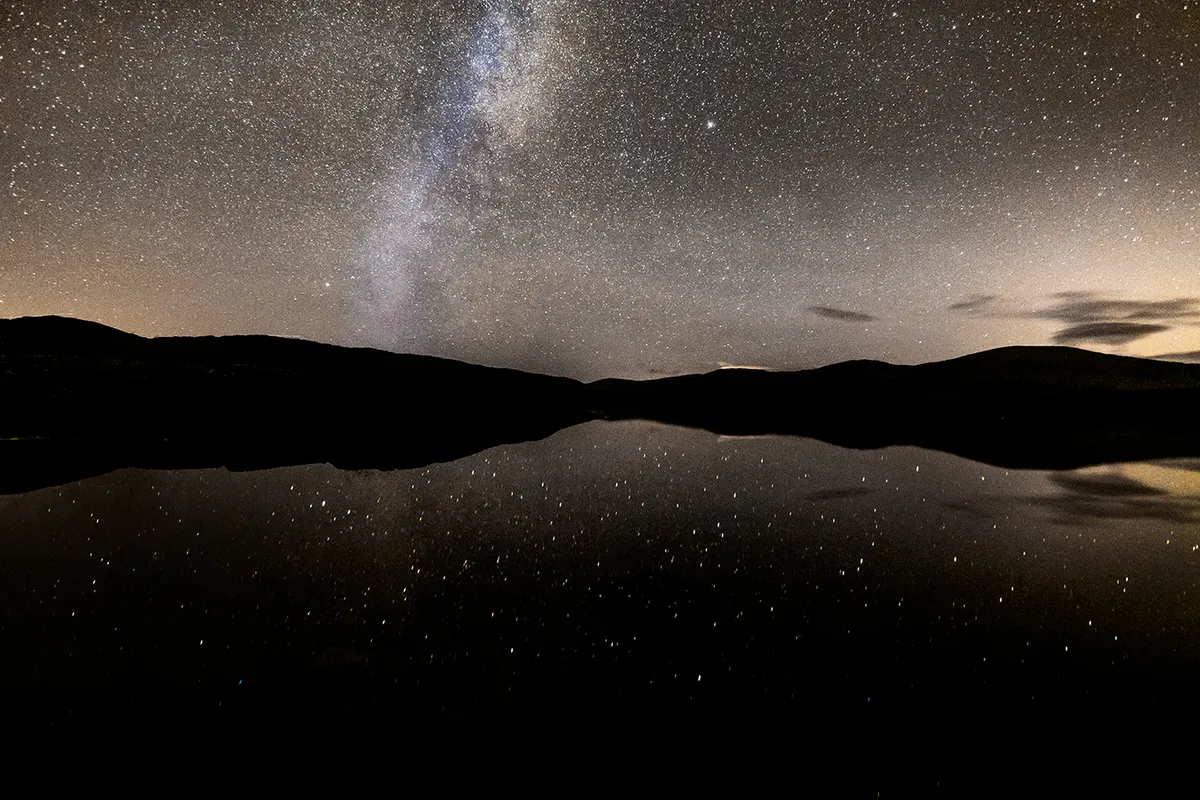
Then during the day you can use your binoculars to track down some of the region’s wildlife, such as the red kites around Loch Ken or the stags and hinds found at the Red Deer Range (expect some drama if you’re travelling in October – that’s rutting season!).
Culture and heritage buffs might want to stay based around a town like Moffat, which boasts museums and art galleries but is also an official Dark Sky Town with specially adapted street lighting.
Those planning trips more focused on astrophotography might want to consider what scenery would best serve as a striking foreground to a skyscape image.
If you’re looking for a calm shot of the Milky Way over the water, then the sea stacks and lighthouses on the Orkney island of North Ronaldsay make for some unique coastline compositions.
For rugged mountains, then Tomintoul and Glenlivet Cairngorms Dark Sky Park – home to the Cairngorms mountain range and the darkest skies measured in the UK – might be best. As the most northerly Dark Sky Park in the world, there’s also a chance you might see the aurora.
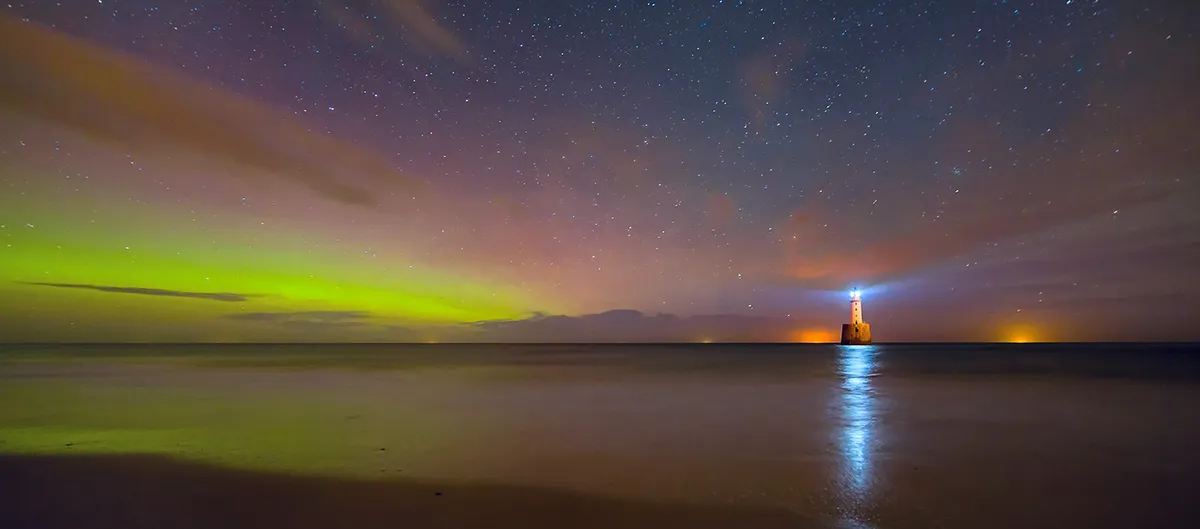
If the northern lights are your main goal though, you’ll want to head as far north as possible which might mean breaking away from the mainland and heading towards the islands. The Isle of Coll is an IDA Dark Sky Island but all the islands including Orkney, Shetland, and the Outer Hebrides, are dark enough to reveal the cosmic mysteries that are usually hidden behind a veil of light pollution. If you’re travelling in February, you might be able to attend the Hebridean Dark Skies Festival.
Once you’ve decided on the general area, find a campsite, B&B or hotel from where you can base your trip. Check current government rules and recommendations relating to the Covid-19 pandemic and you’re good to go!
Choosing an observing site
Once you’ve narrowed down the location, it’s time to pick a specific observing site.
Work out exactly what it is you want to achieve, as this will determine how far off the beaten track you need to go.
If you’re just doing a spot of stargazing, then the easiest and safest place to set up for the night is near a car park such as those found at most trail heads.
For those with a more specific mission in mind – particularly astrophotography – you might need to hike away from the road.
Here it’s safest to stick to one of the many footpaths and trails found around Scotland as these will help you navigate safely in the dark.
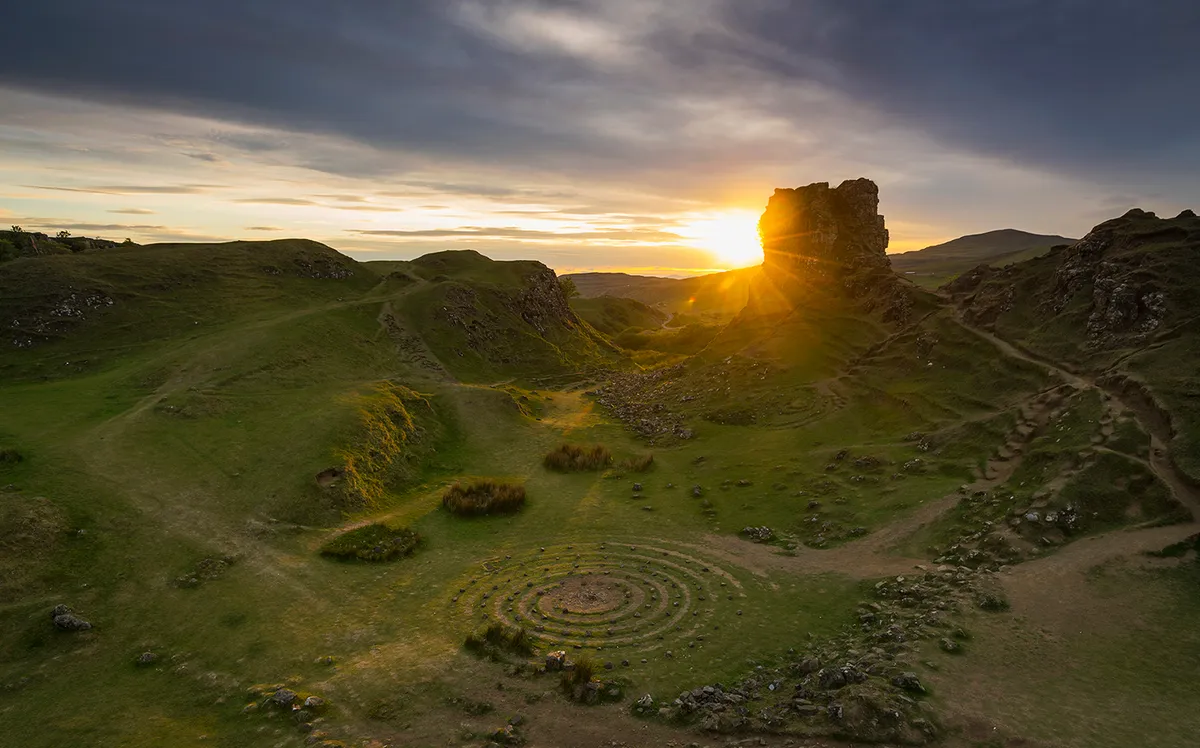
Many of these lead past the ancient burial cairns, ruined farmhouses and castles that can be found throughout the Scottish countryside, which could serve as a dramatic silhouette to use as a foreground for a skyscape image. Be sure to hunt around for the route that serves you best.
Once again, be sure to check local and national travel regulations relating to the Covid-19 pandemic to ensure there are no limitations at your specific location.
Do you have permission to stargaze after dark?
Much of Scotland’s lands and waters are free for the public to access, thanks to the Scottish Outdoor Access Code.
In return, the code asks people to act according to three key principles:
- Respect the interests of other people by not encroaching on people’s privacy or livelihoods e.g. staying away from farmland, construction sites, quarries etc.
- Care for the environment by leaving the land as you find it. Don’t damage the flora and take your rubbish with you.
- Take responsibility for your own actions by acting in a responsible manner that doesn’t put you or others at risk.
Be sure to read the guidelines to ensure you know the code before you go and understand which areas are excepted from the rules.
Check out your observing site during the day
When planning an astronomy trip, it’s a good idea to visit your chosen observing site in daylight.
These scouting missions are easy enough to slot into a day trip – while the kids are busy searching the trees for red squirrels (Scotland is home to 75% of the population), you can be scouting out the area for the best place to set up your scope.
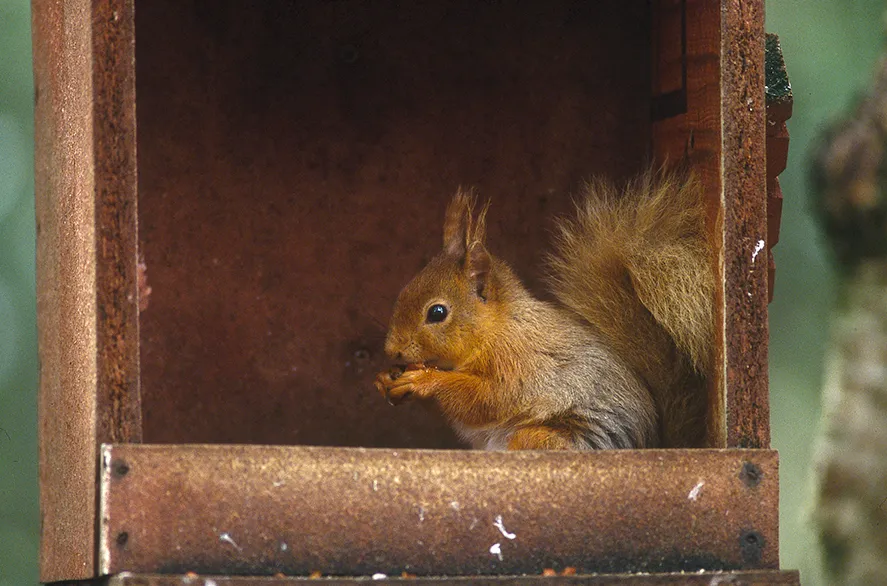
Things you should look out for include:
- Barriers and notices around the car park that indicate it won’t be open during the night hours.
- If staying close to the road, look for a hedge or similar you can shelter behind – there’s nothing worse than having your carefully cultivated dark adaption ruined by a passing car. Plus, it will help protect you from the wind if it gets blustery later on.
- For those going further off the beaten track, you’ll want to go for a hike along the trail you plan on using. Pay attention for steep slopes and uneven ground which will be difficult in the dark.
- Astroimagers should pay particular attention to the landscape to find the best composition to set off their images.
Once you’re done, you can be sure there’s no surprises come observing time and you should still have enough time to visit the local distillery before dinner.
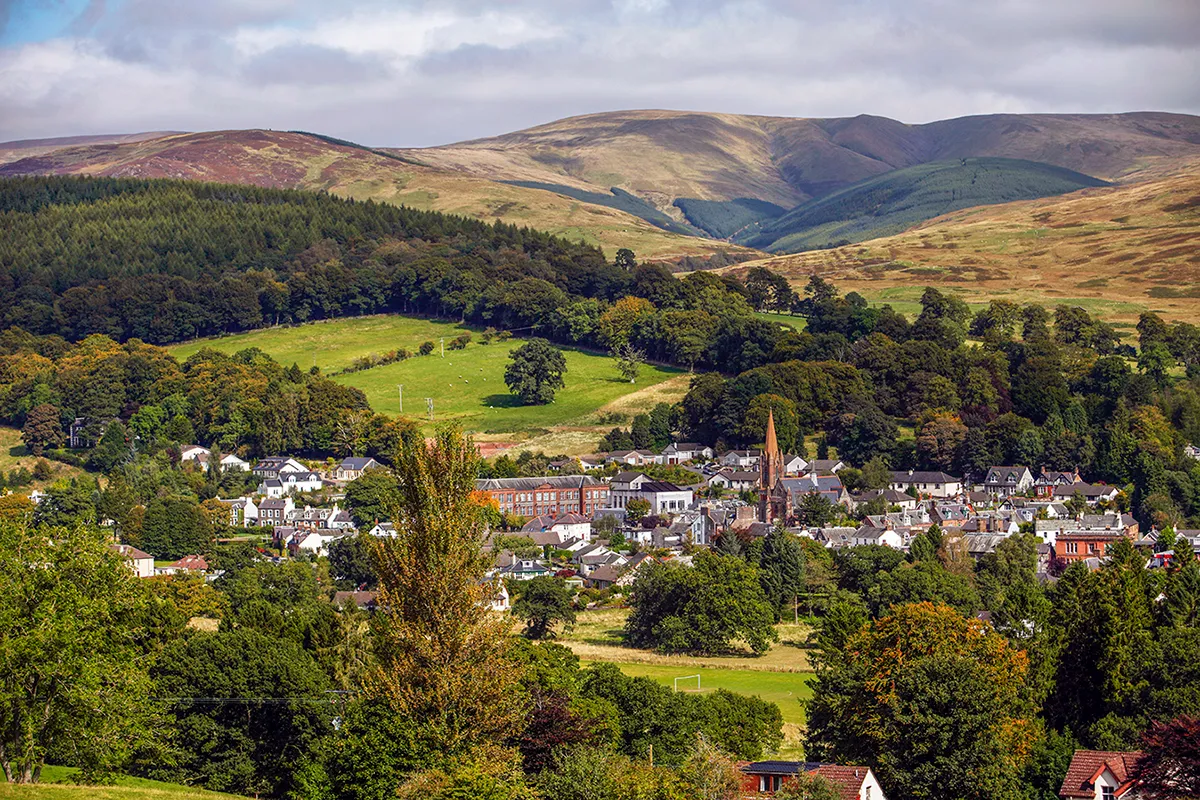
Final preparations before heading out
Now it’s time to head out and get stargazing but before you do, make sure you’re fully prepared.
- Check the weather forecast – if clouds look imminent, consider shifting your plans to another night during your visit.
- Check the aurora forecast, as there’s always a chance you might get lucky even out of season.
- Tell someone where you are going and what time you’ll be back and ensure your phone is fully charged.
- Get together all your equipment including food and water.
- Wrap up warm.
- Refresh yourself on the Scottish Outdoor Access Code and pack a rubbish bag so you don’t leave any litter behind.
Get out observing
After planning your stargazing trip to Scotland, it’s time to head out and enjoy the dark skies.
Once you’ve arrived and set up, switch your phone and torch to red light mode and give your eyes at least 20 minutes to adapt to the dark.
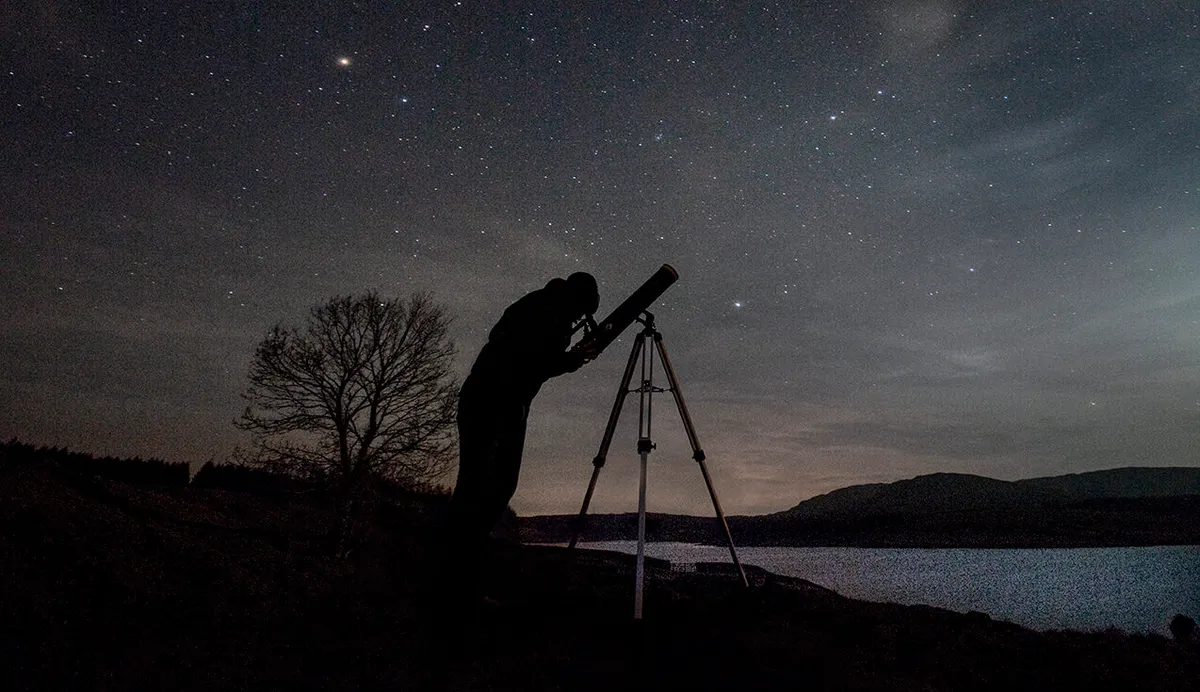
While you’re waiting, look around for any Scottish nocturnal wildlife. Hedgehogs, badgers, bats, owls, and even pine martens – which can almost only be found in Scotland – might pay you a visit throughout the night, so keep an eye out for a visit from the locals.
Then it’s time to turn your head to the sky and enjoy the light-pollution free skies of Scotland.
